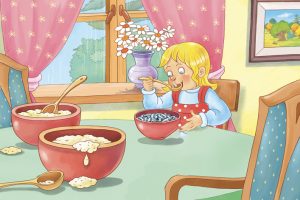By Josh Feldman
All throughout my childhood, my favorite game show was “The Price Is Right.” Before our family purchased a VCR, I looked forward to every day off from school just so I could watch the show at home. Everything about the spectacle appealed to me: the crazy contestants, the cool prizes, and of course the fact that many of the pricing games had a sneaky amount of math baked into them.
Twelve years after I graduated from high school, I got invited to a friend’s wedding in Los Angeles, and I made sure to show up a couple of days early to get tickets to see Bob Barker live and in person. I preregistered for tickets, and even had a custom shirt made that said “Plinko Me, Bob” on the front. I thought I had a 100% chance of getting selected to come on down!
So I arrived at CBS Television City early on the day of the taping, all excited to finally get on television. Alas, when I arrived I saw that thousands of others had the exact same idea, each wearing custom shirts crazier than my own. Not until watching “A Perfect Bid” many years later did I realize that there existed legions of fans far more fervent than me. I didn’t make it on TV; heck, I didn’t even make it in the audience that day. And after that, I must admit that I never had the same love affair with the show.
Hence, it didn’t surprise me that a few weeks ago someone from CBS called me, asking me how to improve the show so that I might watch it again. I told the employee that the easiest fix was that spinning the Big Wheel has grown stale over the years—they needed to beef it up.
For those of you who have never watched “The Price Is Right,” twice during each show three contestants spin the wheel for the right to compete in the Showcase Showdown. There are 20 spaces on the wheel: 5¢, 10¢, 15¢ … all the way up to $1. After your first spin you can choose whether or not to immediately spin again. However, if you spin again and the sum of your spins lands over $1, you are eliminated. The closest contestant to $1 wins.
To entice action, contestants get a $1,000 bonus if they get exactly $1 in either one or two spins. Further, if they do get exactly $1, they get a single bonus spin. On this spin, if the contestant spins 5¢ or 15¢, they win an additional $5,000. And if they spin a dollar in their bonus spin, they win an additional $10,000.
One of the reasons spinning the wheel has gotten so tiresome over the years is that the rules never changed, and allegedly one could find strategy guides online telling people exactly when to spin again and when to stand pat. My suggestion was to change the prize of the bonus spin—making it $50,000 if you spun exactly $1 on the bonus spin instead of winning ten dimes. This not only ups the stakes but changes the probabilities as well.
The producer of the show liked the idea, but wondered how much this rule change would lead to increased prizes given out. The producer asked me how often one would expect to have a contestant win $50,000 under the new rules. While I didn’t know the answer off the top of my head, I was sure my puzzle-solving friends could help out the producer in need!
Note: For all problems below, please assume the following: A) That each spin of the wheel is random and independent, where you have a 5% chance of landing on any of the 20 spaces. B) Winning the Showcase Showdown would net you a prize worth $30,000. C) If you made it to the Showcase Showdown, you had a 50% chance of winning it (as everyone on the show is superfan, no one really has an advantage over anyone else). D) Each of the three spinners optimally maximizes their potential earnings on the show. E) In case of a tie, a final spin will determine who advances, with bonus money only awarded if the tied contestants each spin exactly $1. F) the new $50,000 bonus spin rule is in effect.
- Assume you are the second spinner, and luckily for you the first person spun over a dollar and busted. What money amounts would you stand pat on after one spin? On what amounts would you spin again?
- Now assume you are the first person to spin the wheel. After one spin, what amounts do you stand pat on?
- Given the answers to questions 1 and 2, what is the probability that the first spinner gets exactly $1? What is the probability the second spinner gets exactly $1? How about the third spinner?
- Using the answers to part 3, what is the probability that at least one of the three contestants defies probability and wins $50,000 on the bonus spin?
Solutions to Previous Puzzles: Squaring the Circle
Problem One: Create three necklaces containing numbered beads such that the numbers on the beads of each necklace are distinct positive integers and adjacent pairs of beads sum to perfect squares. (The squares themselves need not be distinct.) Create one necklace with 3 beads, one with 4 beads, and one with 5 beads.
Answers: Here are the answers received with the smallest sums plus the most interesting.
- 3 beads: 6-19-30 with sum 55
- 4 beads: 1-3-33-48 with sum 85
- 5 beads: 1-3-6-10-15 with sum 35
- 3, 4, and 5 beads in one sequence: 1-24-120-3480-3024120 (Keatinge)
Problem Two: Prove that necklaces as described above cannot be created using sets of integers {1, 2, …, N}, for from 3 to 30.
Proof: Assume that we have a necklace using the integers {1, 2, …, N}. Each number ≤ N must have two distinct neighbors also ≤ N. Put another way, if a number is ≤ N, then N ≥ the number’s two smallest distinct neighbors. Since for all N under consideration 2 < N, and the two smallest distinct neighbors of 2 are 7 and 14, we must have N ≥ 14. Now we have 8 ≤ N, and the two smallest distinct neighbors of 8 are 1 and 17 thus N ≥ 17. So 16 ≤ N, and the smallest distinct neighbors of 16 are 9 and 20, making N ≥ 20. Finally, 18 ≤ N with neighbors 7 and 31, implying thatN ≥ 31. (This proof is due to Keatinge.)
Problem Three: Show that in Problem 2, N=32 works.
Answer: 1-8-28-21-4-32-17-19-30-6-3-13-12-24-25-11-5-31-18-7-29-20-16-9-27-22-14-2-23-26-10-15. This seems to be unique up to rotation and flipping. Necklaces can be created for all larger N but they may not be unique.
For more information see the posthumously published Fibonacci Plays Billiards, by Elwyn Berlekamp and Richard Guy, arXiv:2002.03705v1 [math.HO] 4Feb2020 (also published in Canadian Math Society’s journal Crux Mathematicorum (vol. 46, no. 8, a special issue devoted to Richard Guy); see https://cms.math.ca/publications/crux/issue/?volume=46&issue=8).
Solvers—Robert Bartholomew, Bob Byrne, Bob Conger, Bill Feldman, Yan Fridman, Rui Guo, Clive Keatinge, Alex Kozmin, David Promislow, Noam Segal, John Snyder, and Al Spooner.
Solutions may be emailed to cont.puzzles@gmail.com.
In order to make the solver list, your solutions must be received by Nov. 30, 2020.





